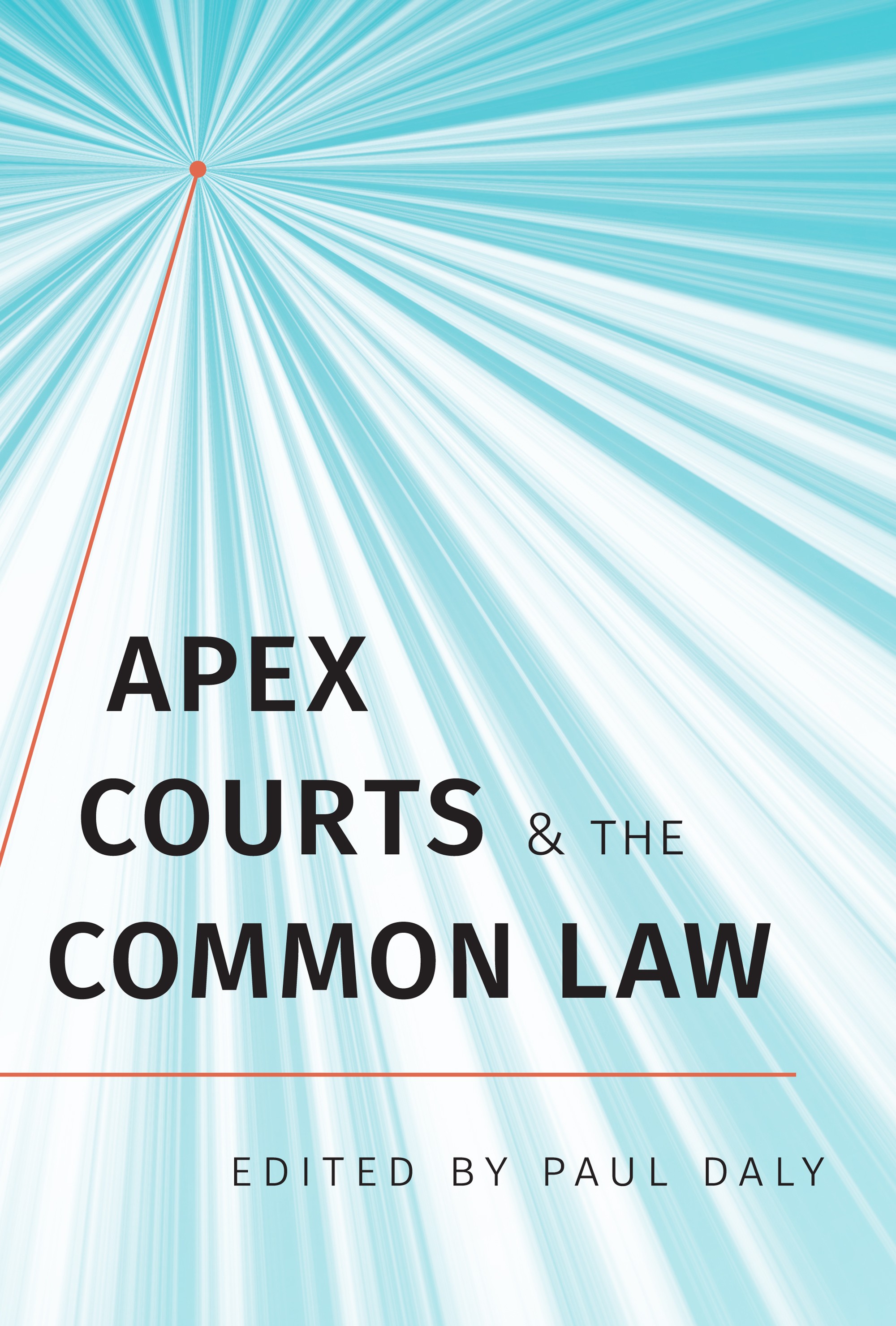Apex Courts and the Common Law

Apex Courts and the Common Law, a collection I edited for University of Toronto Press is now on sale and will be available from next month. On SSRN I have uploaded the introductory chapter. Download it here.
Here is the abstract:
For centuries courts across the common law world have developed their systems of law by building bodies of judicial decisions. By deciding individual cases, common law courts settle litigation and move the law in new directions. Apex courts which sit at the apex of common law systems fulfil these standard dispute-resolution and law-development functions, but they also have a unique institutional position. By virtue of their place at the top of the judicial hierarchy, the decisions of apex courts and, in particular, the language used in those decisions, resonate through the legal system. Moreover, members of the legal community – judges, lawyers, legal academics, students and laypeople – often look to apex courts for general guidance.
Accordingly, the institutional position of apex courts may nudge them away from incremental development of the law based on the resolution of individual cases and towards the elaboration of general principles that can unify large areas of the law and provide meaningful guidance to the legal community and the general public. The development of the common law has typically been seen as a ‘bottom-up’ exercise, with courts proceeding by analogy from case to case without guidance from tablets of stone delivered from on high, whereas an apex court’s position in its national legal system may push it to prefer a ‘top-down’ approach designed to achieve coherence in the application of law by lower courts.
The overarching theme of this collection is the influence of apex courts on the development of the common law. In particular, how the institutional position of apex courts causes them to shape the common law; and conversely how the traditions of the common law shape the way apex courts conceive of their role. Contributors from around the common law world address the overarching theme in three different contexts: first, the particular characteristics of the apex courts of several selected jurisdictions; second, the influence if any of constitutionalism and bills of rights on apex courts’ relationships to the common law; and third, how apex courts have treated core concepts such as causation, restitution, good faith and property.
This introduction provides an overview of the major themes of the collection as a whole and of the individual chapters.
For more information about the book, click here. Here is a table of contents:
Part I: Decision Making by Common Law Apex Courts
1. The Role of the Supreme Court of Canada in Shaping the Common Law – Beverley McLachlin
2. Apex Courts and the Development of the Common Law – Brice Dickson
3. The Common Law, the High Court of Australia and the United States Supreme Court – Peter Cane
4. Against All Odds: Numbers Sitting in the UK Supreme Court and Really, Really Important Cases – James Lee
5. The Reference Jurisdiction of the Supreme Court of Canada – Carissima MathenPart II: Public Law Issues
6. Judicial Review in the American States – Robert Williams
7. The Common Law, the Constitution and the Alien – Audrey Macklin
8. Administrative Law and Rights in the UK House of Lords and Supreme Court – Jason Varuhas
9. The Continuing Significance of Dr. Bonham’s Case – Han-Ru ZhouPart III: Common Law Concepts
10. The Development of an Obligation to Perform in Good Faith –Angela Swan and Jakub Adamski
11. Cause and Courts – Sandy Steel
12. What is happening to the law of unjust enrichment? – Steve Hedley
13. The Supreme Court, Fundamental Principles of Property Law, and the Shaping of Aboriginal Title – Bruce ZiffAfterword – William B. Ewald
This content has been updated on February 13, 2020 at 04:00.